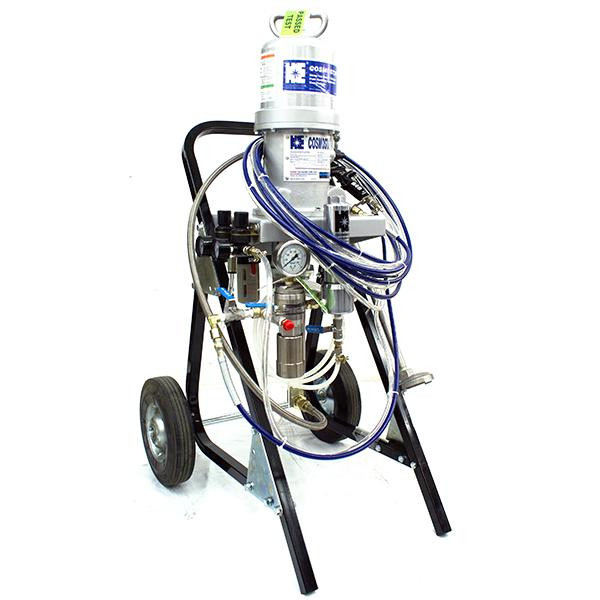When it comes to achieving precise and efficient paint and coating applications, air-assisted sprayers have become the go-to choice for professionals in various industries. These versatile tools combine the benefits of airless and traditional spray systems, delivering exceptional precision, a smooth finish, and reduced overspray. In this article, we'll delve into the world of air-assisted sprayers, exploring their advantages, applications, types, and essential tips for making the most of these powerful tools.
The Advantages of Air-Assisted Sprayers
Air-assisted sprayers offer several significant advantages that make them a valuable asset for professionals in different fields:
Precision: These sprayers use a combination of air and fluid pressure to create a fine, controllable spray pattern. This precision is ideal for applications requiring detail work and accurate coating.
Reduced Overspray: Unlike traditional airless systems, air-assisted sprayers produce less overspray, ensuring that more of the coating reaches the intended surface, which leads to cost savings.
High Quality Finish: Air-assisted sprayers provide a smoother and more even finish, resulting in a professional appearance. This makes them a preferred choice for high-end painting and finishing jobs.
Versatility: These sprayers can handle a wide range of materials, from paints and stains to clear coats and varnishes, making them versatile for different projects.
Efficiency: Air-assisted sprayers work quickly and effectively, making them suitable for both large-scale and smaller-scale jobs.
Applications of Air-Assisted Sprayers
Air-assisted sprayers find applications in various industries, including:
Automotive: Professionals in the automotive industry use air-assisted sprayers for applying paint and clear coat finishes on cars, ensuring a flawless appearance.
Woodworking and Furniture: Woodworkers rely on these sprayers for precision staining, varnishing, and coating wooden surfaces, cabinets, and furniture.
Industrial Coatings: Air-assisted sprayers are essential for applying protective coatings on industrial equipment, machinery, and structural components.
Aerospace: The aerospace industry relies on air-assisted sprayers for precise, smooth finishes on aircraft and spacecraft.
Architectural and Construction: Contractors use these sprayers for interior and exterior painting, offering a high-quality finish on walls, ceilings, and other surfaces.
Types of Air-Assisted Sprayers
There are different types of air-assisted sprayers designed to meet specific needs and applications:
Airless Air-Assisted Sprayers: These sprayers combine airless and air-assisted technologies. They use high fluid pressure to atomize the coating and compressed air to shape the spray pattern.
HVLP (High Volume, Low Pressure) Air-Assisted Sprayers: These sprayers use a lower pressure to produce a higher volume of air, reducing overspray and providing a softer finish. They are suitable for detailed work.
Airspray Electrostatic Sprayers: These advanced sprayers use an electrostatic charge to apply a fine, even coating on surfaces. They are highly efficient and often used in automotive and industrial applications.
Tips for Using Air-Assisted Sprayers
To maximize the benefits of air-assisted sprayers and ensure excellent results, follow these essential tips:
Surface Preparation: Properly prepare the surface by cleaning, sanding, and priming as needed. Remove dust, dirt, and debris to ensure a smooth finish.
Wear Safety Gear: Protect yourself by wearing safety goggles, a mask, gloves, and a respirator when working with toxic coatings or paints. Ensure proper ventilation when working indoors.
Nozzle and Pressure Settings: Select the nozzle and pressure settings that match the material you're using and the surface you're coating. Proper settings are crucial for an even and efficient application.
Practice and Test: Before starting your project, practice on a scrap piece of material to become familiar with the spray pattern and achieve the desired results.
Maintain Consistency: Maintain a consistent speed and distance between the sprayer and the surface to avoid drips, uneven coverage, or excess build-up.
Clean and Maintain the Sprayer: Regularly clean the sprayer and its components to prevent clogs and ensure smooth operation. Follow the manufacturer's maintenance instructions.
Protect Surrounding Areas: Use drop cloths, masking tape, or plastic sheeting to protect nearby surfaces and objects from overspray.
For More Info:-






Comments